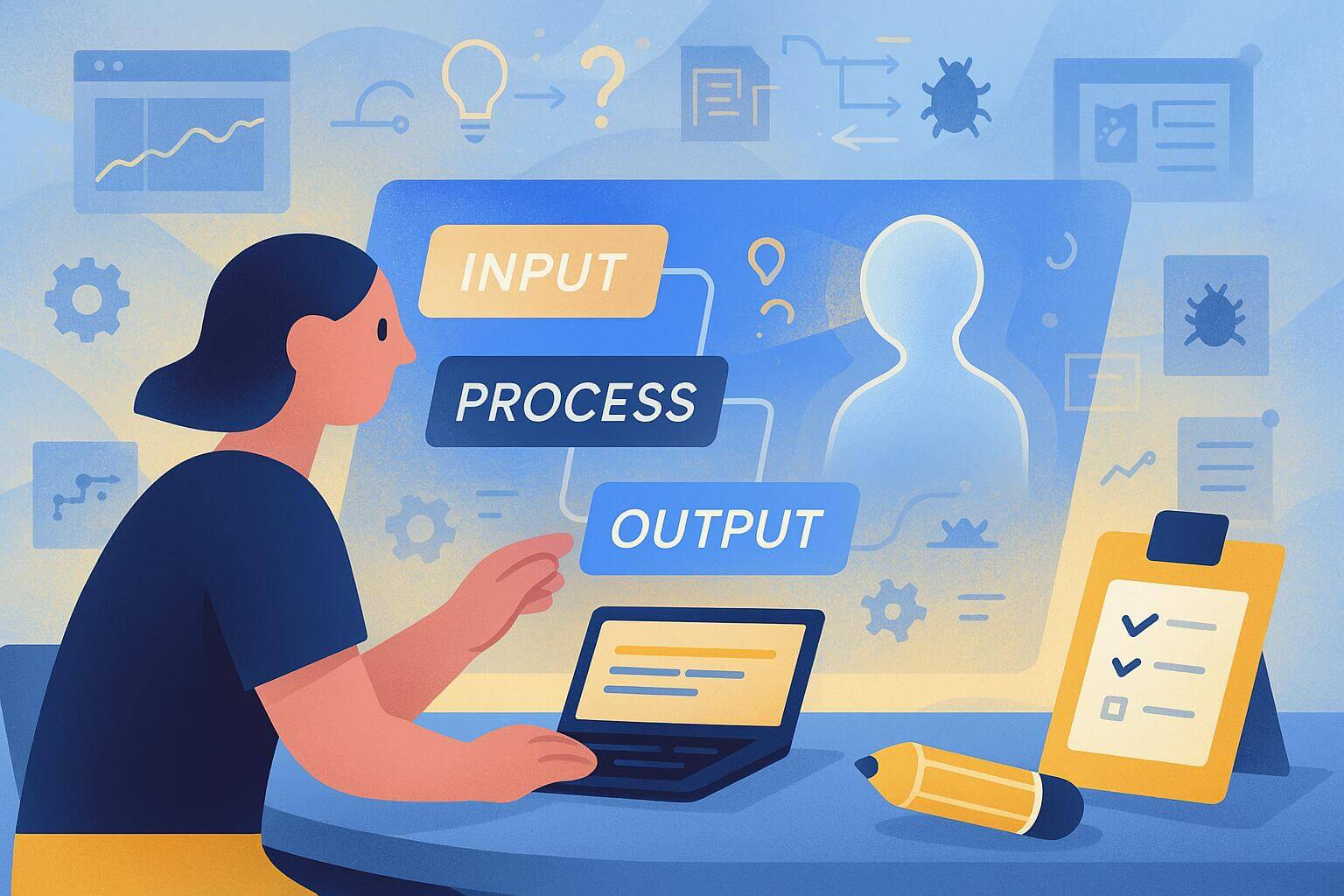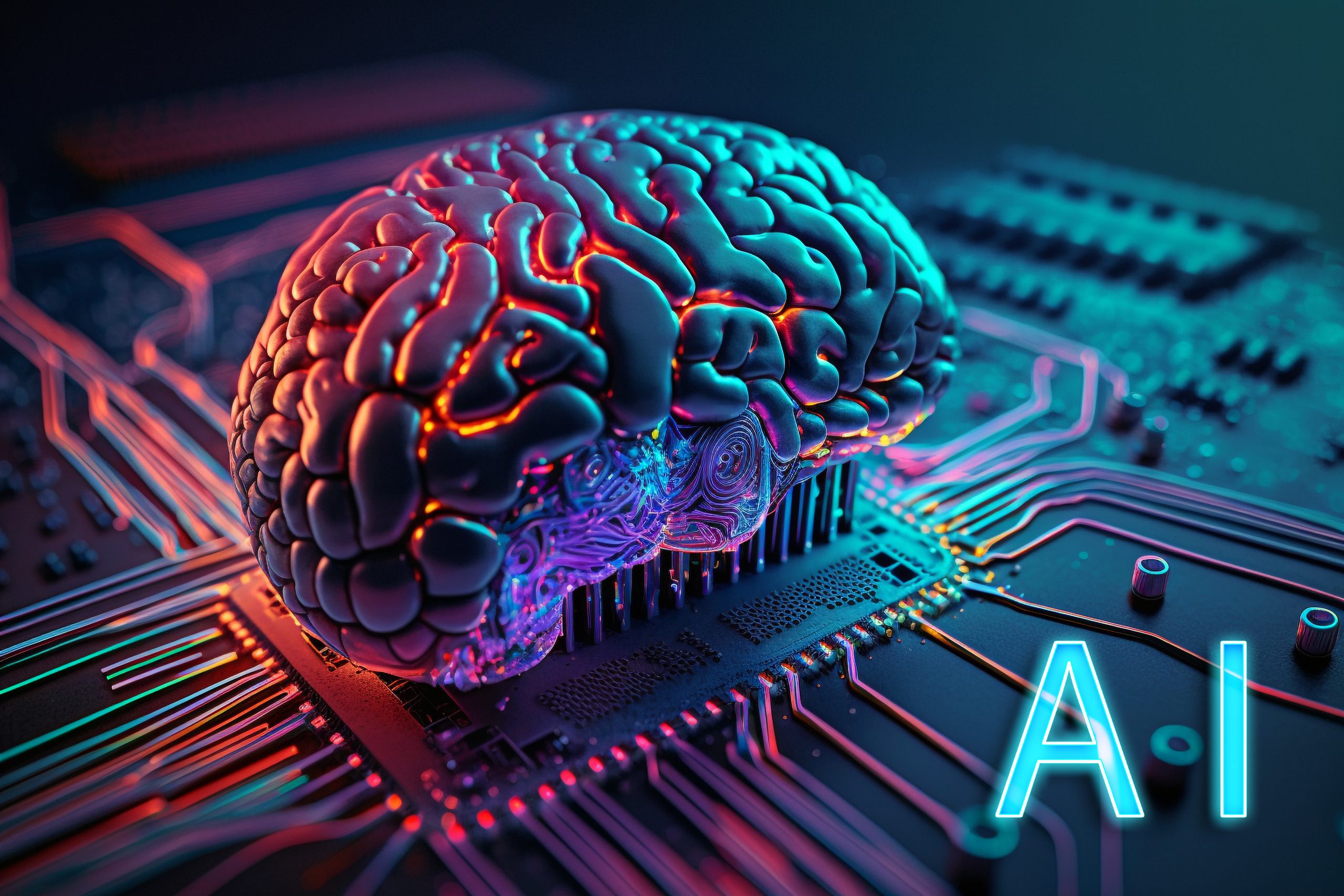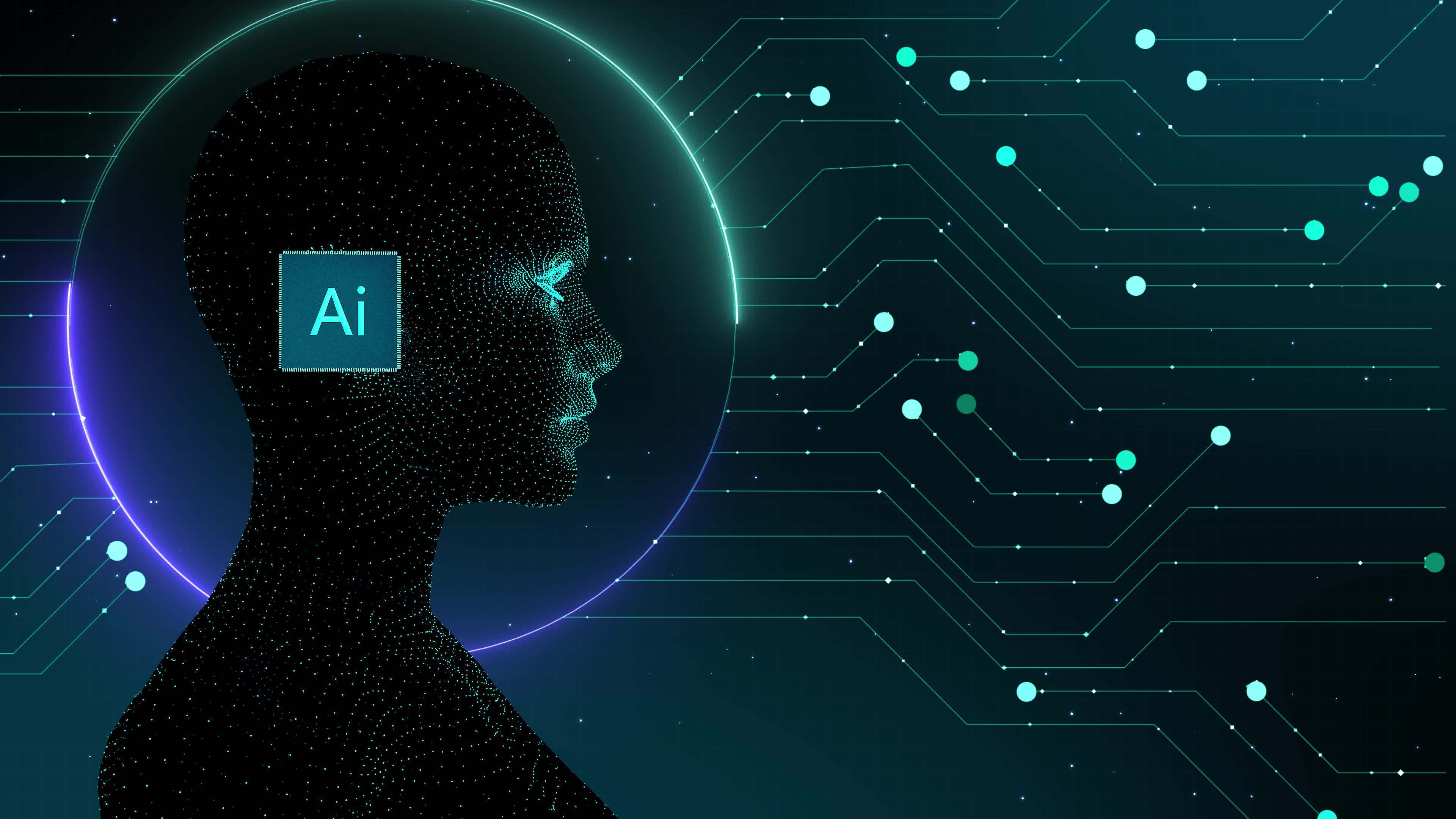
The relentless march of artificial intelligence has sparked widespread debate, often centering on the looming specter of job displacement. Headlines frequently warn of AI eliminating millions of positions, leading many to fear for their professional futures. According to Gallup, a significant 22% of U.S. workers are worried they will lose their jobs to generative AI, a notable seven percent increase since 2021. However, amidst these concerns, a quieter, yet profoundly transformative trend is emerging: AI is not just replacing roles; it’s actively inventing entirely new ones, reshaping the professional landscape in exciting and unexpected ways.
This shift in perspective is crucial for anyone looking to thrive in the coming decade. Experts are increasingly emphasizing that the focus should move from what AI is replacing to what it is quietly inventing. McKinsey’s estimates, for instance, acknowledge that AI could displace up to 800 million workers by 2030, but critically, the study also points out that AI isn’t solely eliminating roles; it’s creating more jobs than it eliminates, particularly in fields where technology augments human capability rather than directly replacing it. This signals an evolution of work, not an extinction, paving the way for hybrid roles that combine human judgment with machine intelligence.
For forward-thinking professionals, students, and recent graduates, understanding these emerging opportunities is paramount. Sam Altman, CEO of OpenAI, envisions a complete redefinition of work, predicting a surge in demand for roles focused on AI supervision, creativity, and problem-solving. Similarly, Ford CEO Jim Farley notes that while AI could wipe out half of all white-collar jobs, it will simultaneously create entirely new types of employment centered on human-machine collaboration. It’s an evolution, as Gavin Yi, CEO of Yijin Hardware, succinctly puts it, stating, “AI is changing what humans do, not eliminating the need for them. The future workforce will be more hybrid, combining machine intelligence with human judgment.” To prepare for this transformed landscape, let’s dive into some of the most pivotal new careers AI is poised to invent by 2030, offering a blueprint for cultivating the skills that will be indispensable.

1. **Prompt Engineer**What it is: Imagine a role where your primary task is to speak the language of AI, to craft the precise inputs, or “prompts,” that guide powerful generative AI models like ChatGPT to produce optimal outputs. This is the essence of a Prompt Engineer. As one expert aptly put it, “prompt engineering is to AI what coding was to the early days of the internet,” underscoring its foundational importance in the nascent stages of AI widespread adoption. These specialists are a fascinating blend of logic, language, and creativity, effectively “programming” AI through natural language instructions rather than traditional code. Their work is about translating human intent into instructions AI can understand and execute effectively, ensuring the technology delivers the desired results.
Why it’s emerging: The explosion of large language models (LLMs) has created an urgent demand for individuals who possess a deep understanding of both the technology and the nuanced art of communicating requests to it. AI systems, despite their sophistication, do not inherently grasp human needs or business objectives; prompt engineers are the critical bridge filling this gap. By 2030, these specialists will be ubiquitous across various sectors, helping companies customize and fine-tune AI for specific domain applications, whether it’s for chatbots, marketing copy generation, or even assisting with coding. This role promises exceptional stability because as AI applications continue to expand into every facet of business and daily life, the demand for individuals who can effectively “speak AI” will only grow. It’s also notable that this is a role AI itself cannot easily replicate, as it requires the unique human ability to understand context, intent, and subtle nuances that machines still struggle with.
How to qualify: The good news is that an advanced degree isn’t necessarily a prerequisite for becoming a successful prompt engineer. Many professionals currently in this field hail from diverse backgrounds, including computer science, linguistics, creative writing, and even marketing, highlighting the interdisciplinary nature of the role. Key skills for aspiring prompt engineers include exceptional communication abilities, sharp critical thinking, and a practical working knowledge of various AI models. A crucial aspect is also understanding how AI outputs can go awry and, more importantly, how to rectify these issues through improved prompting strategies. To embark on this path, one can enroll in specialized courses in prompt engineering; for instance, Vanderbilt University offers a Prompt Engineering course on Coursera, and a plethora of online tutorials are readily available. Gaining hands-on experience with popular generative AI platforms like OpenAI’s ChatGPT is an excellent starting point, and even within your current job, you can practice by experimenting with AI tools and refining their outputs to achieve desired results.
Salary potential: Despite being a relatively new career path, prompt engineers are already commanding impressive six-figure salaries, underscoring the high value placed on this specialized skill set. As of 2025, the average base salary for a prompt engineer in the U.S. hovers around $136,000, with total compensation frequently higher due to bonuses and other incentives. Highly skilled prompt engineers working at leading firms have been known to earn substantially more, with some advertised roles reaching up to $300,000 for individuals demonstrating exceptional expertise in guiding AI models. It’s a reasonable expectation that by 2030, experienced prompt engineers will commonly earn well into the six figures, driven by the escalating demand and the unique combination of technical understanding and linguistic artistry this role requires. This financial incentive, coupled with the critical nature of their work, makes prompt engineering a highly attractive career.
Read more about: 14 Unlikely Automotive Heroes: The Cars That Shocked Everyone and Redefined Success

2. **AI Ethics Officer**What it is: As AI systems become deeply embedded in virtually every aspect of society, from credit scoring and hiring processes to criminal justice applications, the need for a dedicated conscience and compass within organizations has become paramount. This is the role of an AI Ethics Officer, or AI Ethicist. This professional is tasked with the monumental responsibility of ensuring that a company’s AI systems operate fairly, maintain transparency, and rigorously comply with evolving ethical guidelines and regulatory frameworks. They are the architects of “responsible AI” policies, meticulously monitoring algorithms for any signs of bias or potential misuse, and proactively training internal teams on best practices for ethical AI development and deployment. In essence, the AI Ethics Officer serves as the guardian of an organization’s moral integrity in the age of artificial intelligence.
Why it’s emerging: The rapid expansion of AI’s capabilities has brought with it growing concerns surrounding critical issues such as bias, discrimination, privacy infringements, and the overall safety of AI systems. Governments worldwide are responding with new AI regulations, such as the EU’s comprehensive AI Act, while public scrutiny intensifies whenever AI systems fail or produce undesirable outcomes. Companies are acutely aware that the unethical use of AI can lead to severe legal liabilities, significant financial penalties, and irreparable reputational damage. Consequently, integrating an in-house or consulting ethicist is quickly becoming vital for the sustainable and responsible deployment of AI technologies. By 2030, it is anticipated that a substantial number of mid-to-large firms, particularly in sensitive sectors like finance, healthcare, technology, and government, will have a dedicated AI ethics or compliance officer, much like data privacy officers became commonplace following the introduction of data protection laws. This position offers long-term stability, as it is intrinsically linked to fundamental risk management and corporate responsibility, making it far from a fleeting trend.
How to qualify: This is an inherently interdisciplinary career path, often attracting professionals from diverse academic and experiential backgrounds. A common trajectory involves individuals with a foundation in computer science or data science who then acquire specialized training in ethics or law. Conversely, some ethicists emerge from philosophy or social science disciplines, subsequently gaining the necessary technical knowledge to understand AI systems. The good news is that degrees and specialized certificates in AI ethics are now emerging, offering structured pathways into the field (for instance, standalone Ethics of AI certificate programs are becoming more prevalent). Essential skills for this role include a robust understanding of AI technology, comprehensive knowledge of legal and regulatory frameworks, and, most critically, a strong capacity for moral reasoning and ethical discernment. To prepare effectively, prospective professionals can pursue specialized courses in ethical AI offered by platforms like Coursera, edX, and even IEEE. Furthermore, building a portfolio of practical case studies, perhaps by analyzing an existing AI system for potential biases, can powerfully demonstrate your skills and commitment to prospective employers.
Salary potential: AI Ethics Officers are generally well-compensated professionals, reflecting the critical and specialized nature of their work. In 2025, an AI ethicist in the U.S. can expect to earn an average annual salary ranging from approximately $120,000 to $150,000, with some surveys placing the median around $130,000. Given that this role often occupies a senior or advisory position within an organization, salaries can extend significantly higher with increased experience and responsibility; a Chief AI Ethics Officer at a large technology company, for example, could comfortably earn well into the upper six figures. Industry analyses further corroborate these figures, noting that AI ethicists “can make up to $137,000 per year” in current roles, a figure poised to rise by 2030 as demand for their expertise intensifies. The unique combination of technical acumen and ethical insight is a rare and highly prized commodity in today’s job market, commanding a premium salary.
Read more about: You Won’t Believe How Much These 11 Celebrities Paid for Driving Under the Influence (and More!)

3. **AI-Assisted Healthcare Technician**What it is: As AI increasingly integrates into the daily operations of hospitals and clinics, a new frontline professional is emerging: the AI-Assisted Healthcare Technician. This individual is responsible for operating cutting-edge AI tools in direct collaboration with doctors and nurses, acting as a vital bridge between advanced AI systems and patient care. Envision a radiology technician who not only performs X-rays but also expertly works with an AI that analyzes those images for subtle anomalies, or a medical technician skillfully leveraging AI for personalized treatment planning. These technicians will set up and meticulously monitor AI-driven diagnostic machines, interpret complex AI outputs for physicians, and ensure that these sophisticated systems are functioning flawlessly. Crucially, they also interact directly with patients, explaining, for instance, how an AI-based test works, requiring a nuanced blend of technical proficiency and essential people skills.
Why it’s emerging: The healthcare industry is in the midst of an AI revolution, transforming areas such as medical imaging, predictive diagnostics, personalized medicine, and telehealth services. However, doctors and nurses, already operating under immense pressure, do not have the capacity or specialized training to manage every new AI tool independently; this is precisely where the AI-Assisted Healthcare Technician steps in. By 2030, it is anticipated that many healthcare teams will integrate AI-proficient technicians to proficiently handle a diverse range of AI-driven devices, from intelligent MRI machines to advanced AI symptom chatbots. This role is inherently stable and essential because healthcare will always necessitate a human element for compassionate oversight, critical judgment, and direct patient interaction. AI is positioned to augment healthcare workers, enhancing their capabilities rather than replacing them, and those equipped to collaborate seamlessly with AI will be in exceptionally high demand. As one expert notes, AI can dramatically accelerate diagnoses by up to 80%, empowering clinicians—but only if skilled workers are available to effectively utilize these AI tools.
How to qualify: For individuals already immersed in healthcare support roles, such as MRI technicians, lab technologists, or nurses, the path involves proactively learning about the specific AI platforms being adopted in their respective fields. Many progressive hospitals and clinics are already offering targeted training programs on AI-driven equipment. A foundational background in health science (e.g., nursing, biomedical engineering, health IT) is highly advantageous, which should then be augmented with specialized courses in health informatics or AI in medicine. For example, gaining proficiency in handling medical AI software, such as IBM Watson Health, or obtaining a certification in health data analytics can significantly boost one’s qualifications. Strong digital literacy and a comfort with data analysis are absolute necessities. Even for those not yet in healthcare, academic programs in biomedical technology or allied health that integrate AI modules or projects can strategically position you for this burgeoning role, making sure to highlight any AI-related experiences in your studies.
Salary potential: Salaries for this critical role are expected to vary based on geographic location and specific certifications, but generally, expect above-average compensation for healthcare technicians possessing AI expertise. Current job listings for AI-focused healthcare roles often indicate annual salaries ranging roughly from $80,000 to $120,000, which is notably higher than traditional medical technician positions. A remote telehealth specialist with advanced AI expertise, for instance, can already command between $90,000 and $140,000 per year today. By 2030, an experienced AI-enhanced imaging technician or clinical analyst could easily earn a six-figure salary, propelled by their specialized knowledge and the increasing integration of AI in clinical settings. Critically, healthcare roles inherently offer exceptional stability—people will always require care—so when combined with in-demand AI expertise, this career path offers remarkable long-term security and attractive financial prospects.

4. **AI Maintenance Specialist**What it is: Across factories, vast warehouses, and increasingly intelligent smart cities, a burgeoning population of intelligent machines is taking root—from sophisticated robots orchestrating assembly lines to automated guided vehicles navigating logistics hubs. The AI Maintenance Specialist is the next-generation technician for this automated future, tasked not merely with traditional mechanical repairs but with the crucial responsibility of monitoring and nurturing the AI “brains” that govern these systems. This professional embodies a dual mastery, understanding both intricate mechanical systems and the complex algorithms that dictate their behavior. A typical day for an AI Maintenance Specialist might involve updating the software of a robotic arm, meticulously reviewing an AI dashboard for any anomalies in machine behavior, or performing hands-on repairs and precise calibrations to ensure optimal performance. As one expert vividly articulated, “The factory worker of tomorrow won’t just hold a wrench. They’ll monitor dashboards and algorithms too,” perfectly encapsulating the hybrid nature of this essential role.
Why it’s emerging: Companies worldwide are investing heavily in robotics and AI to automate physical tasks, evident in facilities like Amazon’s automated warehouses or automotive plants utilizing AI for advanced quality control. However, even the most sophisticated machines are susceptible to failure or require periodic tuning. When a machine is controlled by AI, a purely mechanical fix is often insufficient; a new breed of expertise is required. You need someone who can accurately diagnose sensor issues, retrain or subtly tweak the underlying AI model, and ensure the system’s autonomous decisions are logical and effective. By 2030, maintenance departments across various industries will routinely include AI specialists, recognizing their indispensable role in keeping intelligent operations running seamlessly. This role promises robust stability because complex automated machines will invariably require a human troubleshooter for unforeseen situations and intricate diagnoses. Indeed, many organizations adopting AI have reported the creation of new tech maintenance and support jobs, even as some more routine, repetitive positions have been streamlined.
How to qualify: A foundational background in mechanical or electrical engineering, or similar trades such as mechatronics or industrial automation, serves as the essential baseline for this career. Building upon this, aspiring specialists must cultivate a strong knowledge base in robotics and artificial intelligence. This includes pursuing courses or certifications in robotics programming, industrial IoT (Internet of Things), or machine learning. If you are an engineer by training, it’s imperative to familiarize yourself with the software side of operations, including PLC programming, Python, and various AI toolkits. Conversely, if your expertise leans towards software, developing a strong understanding of hardware components is critical. Emerging academic programs in Robotics Engineering and Automation with AI are directly relevant pathways. Additionally, considering apprenticeships or specialized training programs offered by industrial giants like Siemens or ABB, which often cover smart automation systems, can provide invaluable practical experience. Any hands-on involvement with automated systems, even a small Arduino/robotics project or maintaining an assembly line machine, will significantly enhance your candidacy.
Salary potential: While traditional industrial maintenance technicians might earn in the range of $50,000 to $70,000, an AI-fluent maintenance specialist can command significantly more, owing to their specialized, dual expertise. To gauge the potential, we can look at analogous roles: Robotics engineers, responsible for designing and maintaining robots, are already averaging around $150,000 per year in the U.S. An AI Maintenance Specialist, existing at the intersection of technician and engineer, should comfortably command high five-figure to low six-figure salaries at the entry to mid-level. By 2030, a seasoned professional in this role at a large, tech-forward manufacturing or logistics company could realistically expect to earn $100,000+ annually, with senior specialists potentially earning even higher. The scarcity of talent possessing this rare cross-disciplinary skill set will undoubtedly drive competitive salaries. In short, professionals who can expertly keep the AI machines humming are invaluable assets to employers, as it’s often easier to procure a new robot than to find someone capable of fixing an AI-driven robot when it malfunctions.
Read more about: Navigating Medicare: 12 Essential Gaps in Coverage You Need to Understand
5. **Sustainable AI Analyst**Did you know that training large AI models can produce a carbon footprint equivalent to five cars operating for their entire lifespan? This startling fact underscores the critical emergence of the Sustainable AI Analyst. This professional operates at the crucial intersection of environmental responsibility and advanced AI deployment, with a core mission to ensure that artificial intelligence systems are not only powerful but also energy-efficient and eco-friendly. Their work involves meticulously tracking and optimizing the energy consumption associated with AI processes, particularly within massive data centers, and actively seeking innovative solutions to reduce waste, such as minimizing cooling costs and eliminating idle computing power.
Furthermore, Sustainable AI Analysts are tasked with leveraging AI itself to achieve broader corporate and global sustainability goals. This could involve deploying AI to optimize supply chains for reduced emissions, predict resource needs more accurately, or develop smart energy grids. In essence, they grapple with a fundamental question: How can humanity harness the immense benefits of AI while simultaneously minimizing its environmental footprint? This dual perspective makes their role exceptionally complex and vital, requiring a deep understanding of both technological capabilities and ecological imperatives.
This role is rapidly emerging as companies globally adopt AI at an unprecedented scale, inadvertently inflating their carbon footprints due to the immense computational demands. Simultaneously, there’s intensified global pressure for businesses to achieve ambitious green targets and adhere to strict ESG (environmental, social, and governance) standards. AI, therefore, finds itself in a unique position: it is both a significant contributor to the problem of increased energy consumption and a powerful tool capable of driving substantial environmental savings. By 2030, it is widely anticipated that numerous organizations, especially large technology firms, financial institutions, and any company committed to substantial climate pledges, will establish dedicated Sustainable AI teams. These analysts are expected to become permanent fixtures within corporate structures, as sustainability is a continuous commitment, not a fleeting project, ensuring long-term job stability. Moreover, the impending advent of regulations or carbon taxes, potentially mandating detailed reporting on AI’s energy usage, will further solidify the indispensable nature of this role.
Qualifying for a career as a Sustainable AI Analyst demands a truly multidisciplinary approach. A highly effective pathway typically involves a strong foundation in data science or computer engineering, augmented by specialized knowledge in environmental sustainability. For instance, a professional might pursue a computer science degree and then undertake advanced coursework in sustainable technology or earn a ‘Green IT’ certification. A crucial skill set includes profound knowledge of cloud computing, given that a substantial portion of AI operations occur within cloud data centers, alongside the ability to accurately measure and analyze energy usage. Familiarity with cutting-edge tools such as carbon trackers for software and a deep understanding of algorithmic efficiency are also paramount. Conversely, individuals transitioning from environmental science or related sustainability fields must significantly bolster their statistical analysis and coding skills to effectively analyze complex AI systems and their impacts. Several forward-thinking universities have also begun offering specialized courses in AI for sustainable development, providing invaluable structured learning opportunities. Staying continuously updated on pioneering industry initiatives, such as Google’s advancements in AI energy reduction or Microsoft’s comprehensive sustainability reports, can also furnish practical and relevant insights, preparing aspiring analysts for real-world challenges.
While the role of Sustainable AI Analyst is relatively new, a standardized salary structure is quickly taking shape, reflecting its critical value. Current projections suggest compensation will be comparable to other high-level data analyst or specialized AI roles. In the U.S., a data scientist working directly with AI can expect to average around $125,000 annually as of 2025. When combining this technical acumen with a deep understanding of sustainability, we can confidently project a mid-level Sustainable AI Analyst earning upwards of $100,000. For those operating within large tech behemoths or major financial companies, where the environmental stakes are exceptionally high and corporate responsibility is paramount, these roles could realistically command salaries reaching $150,000 or even higher, particularly with extensive experience. The profound value these professionals deliver—tangible savings in energy consumption and operational costs, coupled with ensuring crucial regulatory compliance—directly impacts a company’s financial health and public image, which is consistently rewarded with premium compensation. This career path also carries a unique mission-driven appeal, as companies are increasingly keen to attract top talent by offering highly competitive remuneration for roles that directly advance their sustainability objectives and contribute to a more responsible technological future.
Read more about: The 15 Hardy Coupes That Can Easily Reach a Quarter Million Miles Unchallenged

6. **AI-Enhanced Creative Director**Welcome to the exciting evolution of creative leadership across diverse sectors like advertising, graphic design, entertainment, and high fashion. The AI-Enhanced Creative Director is not merely a traditional creative professional—whether they are a creative director, art director, or lead designer—but rather an innovator who deeply integrates advanced AI tools into every facet of the creative process. This innovative approach positions AI not as a replacement for human ingenuity, but as a formidable force multiplier, capable of rapidly generating a multitude of ideas, intricate mockups, or diverse content variations at an astonishing speed. The human director then takes on the indispensable role of curator, meticulously refining and selecting the most impactful outputs. As one expert succinctly describes, these directors function as “curators, combining intuition with machine-generated content,” emphasizing the powerful synergy between human vision and machine capability. For instance, an AI-enhanced creative director at a dynamic marketing firm might leverage sophisticated generative AI to produce dozens of compelling ad concepts or visually stunning images within minutes, subsequently choosing and meticulously tweaking the best ones to forge an unforgettable campaign.
This role is rapidly gaining prominence as creative industries wholeheartedly embrace AI to achieve unprecedented levels of productivity and innovation. Imagine the possibilities: AI can instantly generate detailed images for storyboarding or concept art, draft compelling marketing copy, or even compose original musical scores. However, it’s crucial to acknowledge that raw AI output, while impressive, often lacks the nuanced human touch required to truly resonate with an audience or convey complex emotional depth. Herein lies the irreplaceable value of the human creative director: they provide the overarching vision, impeccable taste, and compelling storytelling prowess, while the AI contributes sheer creative output and serves as an endless wellspring of inspiration. By 2030, it will be commonplace for creative teams to include a leader who is not only fluent in traditional creative principles but also deeply proficient in AI-driven tools, guiding projects with an innovative edge. This career path is exceptionally exciting and inherently future-proof because human creativity, when powerfully augmented by AI, can achieve groundbreaking results that neither could accomplish in isolation. Companies that skillfully integrate AI into their creative workflows, led by such visionary directors, are destined to outpace their competitors. Furthermore, the relentless demand for brand content, at a scale previously unimaginable, will become a standard expectation, and creative directors adept at leveraging AI will be indispensable in meeting this challenge and thriving in the new landscape.
To qualify as an AI-Enhanced Creative Director, a robust foundational background in a core creative field is absolutely essential, whether that’s graphic design, marketing, film production, or fine arts. Many successful creative directors today hold bachelor’s degrees in design, visual arts, marketing, or similar disciplines, complemented by years of invaluable experience in conceptualizing and executing impactful creative campaigns. To truly excel as an AI-enhanced creative, the imperative next step is to actively engage with and master the latest AI tools. This means hands-on experimentation with generative art software like DALL-E and Midjourney, exploring AI-powered video editors, and becoming proficient with advanced copywriting AI platforms such as Jasper or ChatGPT. A plethora of online courses tailored for creatives to integrate AI into their workflows are now available, and mastering AI features within industry-standard suites like Adobe is becoming increasingly critical. Prospective directors should actively demonstrate their ability to achieve faster, more innovative results or explore entirely new creative styles by integrating AI. Building a portfolio that explicitly showcases AI’s role in your workflow—for example, presenting an album cover design explicitly created with AI assistance—will significantly enhance your candidacy. Additionally, honing your leadership and project management skills is vital, as creative directors are ultimately responsible for guiding and inspiring their teams. This rare and highly sought-after hybrid skill profile, combining profound creative vision with advanced technological savvy, is precisely what makes this role so uniquely valuable in today’s rapidly evolving creative landscape.
AI-Enhanced Creative Directors are consistently among the most well-compensated professionals in their field, and the integration of AI capabilities only amplifies their market value. As of 2025, an average marketing or creative director who possesses strong AI skills can readily command an annual salary in the U.S. ranging from $130,000 to $150,000. Traditional creative directors in the advertising industry already average impressive six-figure incomes, with those at elite agencies or prominent companies in entertainment and gaming often earning upwards of $200,000. By 2030, we fully anticipate that AI-savvy creative directors will consistently command premium salaries—projecting to be 20-30% higher than their counterparts who do not actively leverage AI. This could easily translate to high six-figure earnings for top talent operating in major creative markets. The rationale for this premium is straightforward and compelling: if a director can utilize generative AI to accomplish in a single week what an entire team previously took a month to complete, they are generating immense cost and time savings for their organizations. This direct, measurable impact will undeniably be reflected in their compensation. Moreover, these roles have the potential to evolve into executive-level positions, such as Chief Creative Technologist, which would naturally entail commensurately higher remuneration, marking a truly transformative career trajectory.
Read more about: Beyond the Screen: 15 Stunt Realities Where Performers’ Fear Was Absolute, and AI’s Looming Impact
7. **AI Literacy Educator**In an era where artificial intelligence is rapidly permeating every facet of modern life, from sophisticated office software to advanced customer service platforms, there is an urgent and ever-growing imperative to equip individuals with the knowledge and skills to use AI tools both effectively and ethically. This crucial responsibility falls squarely on the shoulders of the AI Literacy Educator. This dynamic role manifests in a myriad of forms: from corporate trainers meticulously upskilling employees on the latest AI software, to expert consultants facilitating comprehensive workshops for senior executives on the foundational principles of AI, or even dedicated school teachers developing innovative AI literacy curricula for the next generation of students. The overarching goal remains consistent: to significantly enhance understanding and competency in the responsible and proficient utilization of artificial intelligence. As AI becomes as ubiquitous and essential as email in the contemporary workplace, this role is akin to the pioneering professionals who taught computer literacy or foundational internet skills in previous decades, but now with a sharp, specialized focus on the intricacies of AI. Gavin Yi, a prominent CEO in the AI industry, aptly highlights this need, noting that dedicated professionals will be required to “train others on how to use AI effectively and ethically, now that it’s embedded in everything from office tools to customer service,” underscoring the pervasive nature of AI’s integration.
The rapid emergence of this role is driven by a looming and massive skills gap that is quickly opening up across industries. As AI tools become deeply integrated into daily workflows, many professionals find themselves unprepared to leverage these powerful technologies, creating an urgent need for widespread education and training. The demand extends beyond individual users to entire organizations that need to transition their workforces into an AI-enabled environment. Ensuring a workforce is AI-literate is not just about efficiency; it’s about fostering responsible adoption and mitigating potential risks associated with AI misuse. Furthermore, as AI literacy becomes a fundamental requirement for navigating both professional and personal landscapes, this role provides an essential bridge, empowering individuals and organizations to adapt and thrive. It is a stable and growing profession because the need for continuous learning and adaptation to new technologies is a permanent feature of the modern economy, positioning AI Literacy Educators at the forefront of this ongoing educational evolution.
To effectively qualify as an AI Literacy Educator, a combination of exceptional communication and teaching skills is paramount, coupled with a deep, practical understanding of a wide array of AI tools, including generative AI, automation platforms, and various analytics applications. Experience in curriculum development and delivering effective training programs is highly advantageous, demonstrating the ability to structure and convey complex information clearly. Pursuing certifications in popular AI platforms, such as those offered by Google Cloud AI, Microsoft Azure AI, or Amazon Web Services, can significantly bolster one’s credentials, showcasing practical expertise. Furthermore, a thorough familiarity with AI ethics and responsible AI frameworks is absolutely critical, as a key component of the role involves guiding users on the ethical implications and responsible deployment of AI. The ability to break down highly complex technical concepts into accessible, digestible information for diverse audiences—ranging from technical experts to non-technical staff or even students—is a hallmark of a successful AI Literacy Educator, making them indispensable in an increasingly AI-driven world.
Salaries for AI Literacy Educators are reflecting the growing demand and the critical nature of their work. For corporate trainers, the average annual salary typically ranges from $70,000 to $100,000, but with a specialized focus on AI, this figure can be significantly higher due to the niche expertise. Consultants who possess a strong command of AI education and training are often able to command upwards of $150,000 annually, particularly when working with large enterprises or on high-impact projects. Educators engaged in developing and teaching AI curricula within academic institutions are also generally well-compensated, acknowledging the strategic importance of preparing students for an AI-centric future. By 2030, this role is anticipated to be a cornerstone profession, commanding highly competitive salaries, especially for those in corporate training or specialized consulting capacities. The profound value delivered by these educators—bridging the pervasive skills gap, accelerating the responsible adoption of AI, and fostering a confident, competent workforce—directly contributes to an organization’s innovation capacity and competitive advantage, ensuring attractive financial prospects for those who choose this impactful career path.
As we’ve journeyed through these unexpected and transformative career paths, one truth has become abundantly clear: the future of work is not one of scarcity, but one of exciting evolution. The relentless march of artificial intelligence is not merely displacing existing roles; it is acting as a powerful catalyst, igniting the creation of entirely new professions that demand a unique blend of human ingenuity, critical thinking, and technical collaboration. From shaping AI’s language as a Prompt Engineer to safeguarding its ethical deployment as an AI Ethics Officer, or even empowering the next generation as an AI Literacy Educator, these roles represent the cutting edge of professional opportunity.
Read more about: Susan Kendall Newman: Reflecting on a Life of Artistry, Activism, and Unyielding Dedication
For forward-thinking professionals, students, and recent graduates, the worst mistake isn’t fearing AI, but rather preparing for a world that no longer exists. Instead, the smart move is to actively cultivate skills that are inherently human—problem-solving, adaptability, critical thinking, and nuanced communication—and combine them with a practical understanding of how to work synergistically with AI systems. As Gavin Yi, CEO of Yijin Hardware, powerfully advises, “AI is changing what humans do, not eliminating the need for them. The future workforce will be more hybrid, combining machine intelligence with human judgment.” By embracing this evolution and proactively developing the in-demand competencies highlighted in this series, you can not only future-proof your career but also position yourself to lead and innovate in the dynamic, AI-powered economy of 2030 and beyond. It’s an exhilarating time to be a professional, and the opportunities are truly boundless for those ready to adapt and thrive.





